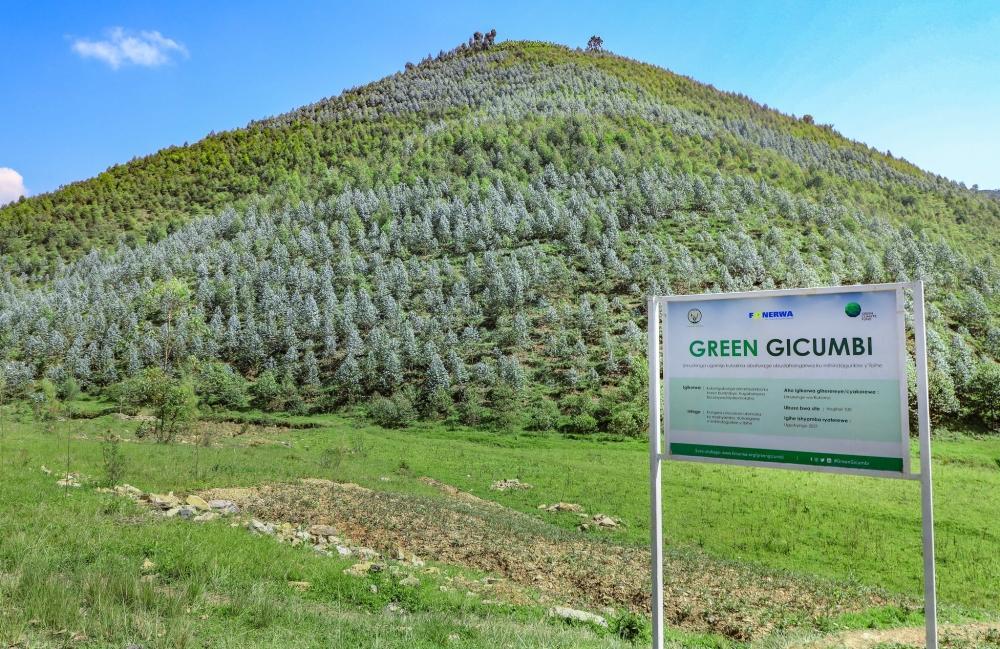Africa-Press – Rwanda. Rwanda is seeking to attract investors to implement its revised Green Growth and Climate Resilience Strategy (GGCRS), which is part of efforts to position the country as a developed, climate-resilient, and low-carbon economy by 2050.
The development, announced during a high-level policy dialogue in Kigali, sets out new plans to support the country’s green ambitions, including climate resilience, as well as private sector-led investment.
Originally adopted in 2011, the green growth and climate strategy was revised in 2023 to better account for current climate challenges.
A key feature of the revised strategy, according to officials, is the inclusion of a financing plan, which is intended to mobilize both domestic and international capital into Rwanda’s green market.
“On average, the investment required to implement the revised GGCRS will reach $2.2 billion annually, of which approximately $700 million will come from the government budget and spending,” a document obtained by The New Times reads in part.
William Mugabo, a lead expert behind the revised strategy, explained four priority areas, including green industry and trade, green urban transition and integration, sustainable land use and resource management, as well as vibrant, resilient green rural livelihoods.
“Financing is key in implementing this strategy, and this budget will largely come from the government and private sector, but this time around, we are also focusing on having tailor-made projects funded by private investors,” Mugabo pointed out.
This, he argued, reflects the government’s shift from donor-dependent initiatives toward large-scale investments.
Teddy Mpinganzima Mugabo, Rwanda Green Fund chief executive, echoed similar sentiments, citing that developing countries must build ecosystems that attract and manage a diverse mix of funding, including grants, loans, and public-private partnerships.
“We are proud of the work done but have also learned how to use funds to move away from scattered projects to more focused and sustainable ones where we are engaging the Ministry of Agriculture, Infrastructure, among others,” she said.
Faustin Munyazikwiye, Rwanda Environment Management Authority (REMA) Deputy Director-General, maintained that the revised green growth strategy is not only about climate-friendly projects, but about reshaping how institutions plan, coordinate, and track such initiatives.
He asserted that previous planning efforts were often reactive, lacking a long-term, evidence-based approach.
“We must improve the planning because we have been having plans based on incidents. Instead, we need to focus on research and long-term planning, but also design programs that are based on this,” Munyazikwiye said.
Private sector key
While ambitious, Valentine Uwamariya, the Minister of Environment, said that the new strategy provides a national roadmap to achieving green growth and climate resilience, while at the same time driving economic transformation.
“Our success depends on unlocking significant climate and nature finance, deepening private sector engagement, and building systems that deliver measurable impact,” Uwamariya said.
She maintained that Rwanda must shift from fragmented projects to coordinated investments such as climate-smart agriculture, sustainable infrastructure, and land management.
Initially, officials said, the focus of land and natural resource management must be on vulnerable and climate-impacted areas and populations.
It is also expected that in the next ten years, Rwanda will design and implement the necessary interventions to support the maintenance and enhancement of its natural capital base.
It is estimated that over 74 percent of Rwanda’s national territory is used for agriculture.
“This will support rural livelihoods, larger resource-based sectors, as well as the security and productivity of strategic natural resources such as water and land resources.”
“Importantly, the short-term focus on natural and water resources management should also facilitate the transition from extractive processes and the export of raw materials to resource preservation through value-adding product development and green efficiency.”
“Our monitoring and evaluation systems must evolve to capture not just activity, but real outcomes. Data, learning, and accountability will be the backbone of trust and long-term financing,” Uwamariya added.
The updated strategy is intended to align with existing financial mechanisms, such as the $11 billion Rwanda Green Taxonomy and the $3 billion Climate and Nature Finance Strategy.
Both frameworks are focused on attracting private investment for sustainable green projects.
For More News And Analysis About Rwanda Follow Africa-Press






